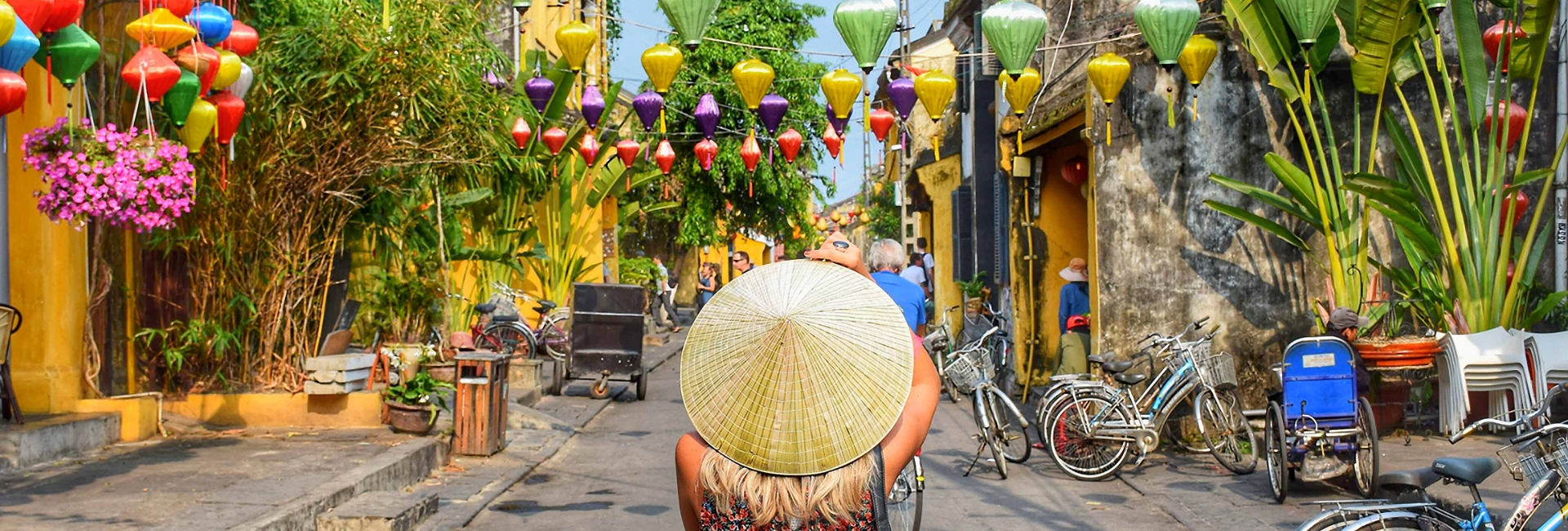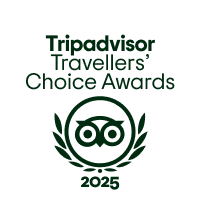Travel to Vietnam from Singapore will be perfect for Singaporeans due to a few hours from Singapore, as well as Vietnam beckons with a tapestry of experiences that blend ancient traditions with modern vibrancy, bustling cities with serene landscapes, and age-old recipes with contemporary cuisine. In this travel guide blog, Indochina Voyages will guide you from A to Z on how to get the best Vietnam tour package!
Flight to Vietnam from Singapore
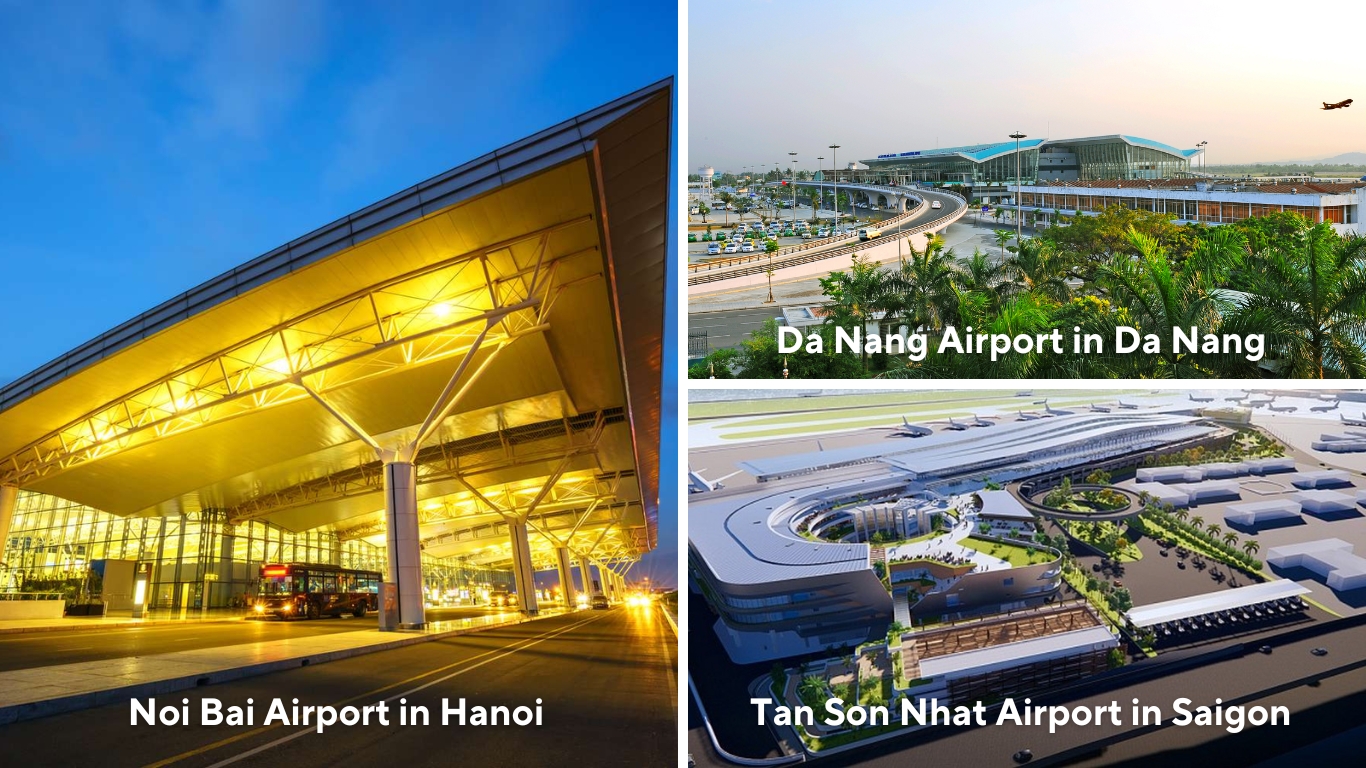
The strong air connectivity between Singapore and Vietnam makes travel planning straightforward and flexible. From Singapore’s Changi Airport, you have direct access to three major Vietnamese cities, each serving as a gateway to different regions of the country.
Direct routes and flight times:
- Hanoi (North): 3 hours 15 minutes
- Da Nang (Central): 2 hours 35 minutes
- Ho Chi Minh City (South): 2 hours
Airlines operating these routes maintain frequent daily schedules. Singapore Airlines and Vietnam Airlines serve as the primary carriers, with Vietjet Air and Bamboo Airways offering additional budget options. Ho Chi Minh City sees the highest frequency with 6-8 daily flights, while Hanoi averages 4-6 flights, and Da Nang operates 2-3 daily services.
Fare expectations (SGD):
Economy Class
- Off-peak: 200-350
- Peak season (Dec-Feb, Jun-Jul): 300-450
- Flash sales: Starting from 150
Business Class
- Regular fares: 800-1,500
- Special offers: 600-900
For the best deals, consider booking 2-3 months in advance and being flexible with your travel dates. Mid-week flights often offer better rates than weekend departures. During traditional Vietnamese holidays, particularly Tet (Lunar New Year), flights can be significantly more expensive and should be booked well in advance.
Morning flights, while typically pricier, provide better connections if you’re planning to explore beyond your arrival city. This is particularly beneficial when visiting northern destinations like Halong Bay or Sapa from Hanoi, or the Mekong Delta from Ho Chi Minh City.
Vietnam Visa for Singaporean
One of the major advantages for Singaporean travelers is visa-free entry to Vietnam. This privilege allows for hassle-free travel planning, though there are important requirements to note.
Key entry requirements:
- Valid passport (minimum 6 months beyond stay)
- Two blank visa pages
- Proof of onward/return travel
- Sufficient funds for your stay
- Maximum stay: 30 days per entry
While no visa is required, it’s essential to register with Singapore’s Ministry of Foreign Affairs through their e-Register system (eregister.mfa.gov.sg) before your trip. This ensures you can receive assistance if needed during your stay.
Important diplomatic contacts in Vietnam:
Embassy of Singapore in Hanoi:
- Address: 41-43 Tran Phu Street, Ba Dinh District
- Emergency: +84-904-696-589
- Regular contact: +84-24-3848-9168
- Email: [email protected]
Singapore Consulate in Ho Chi Minh City:
- Address: Saigon Centre Tower 2, #11-05, 67 Le Loi Boulevard
- Emergency: +84-903-113-500
- Regular contact: +84-28-3822-5174
- Email: [email protected]
For your peace of mind, consider purchasing comprehensive travel insurance beyond Vietnam’s basic requirements. This can help cover unexpected medical expenses and travel disruptions.
Where to Go if Traveling to Vietnam?
Vietnam stretches over 1,600 kilometers from north to south, offering diverse landscapes and experiences that change dramatically with each region. From North to South, from mountain ranges to tropical beaches, ancient cities to modern metropolises, each destination in Vietnam holds its own unique charm.
Northern Vietnam
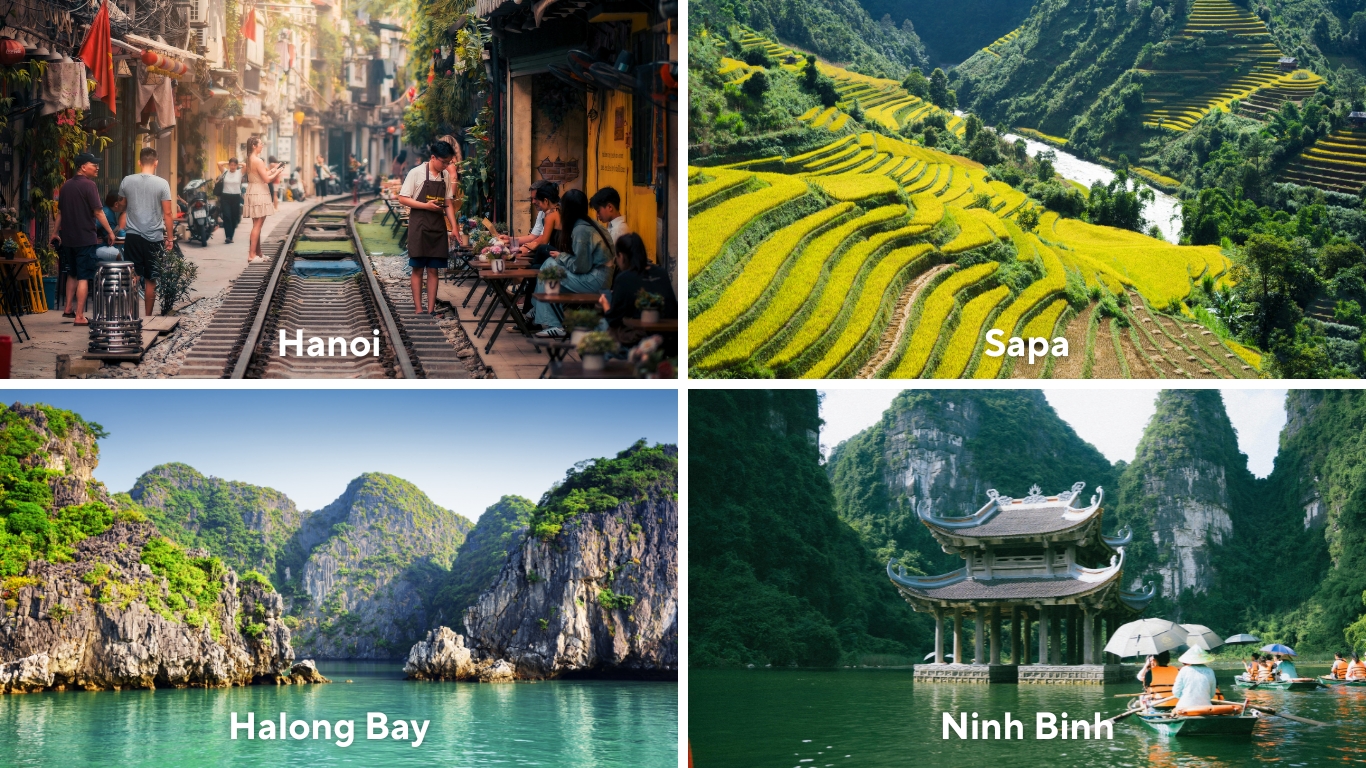
Northern Vietnam showcases the country’s cultural heart and most dramatic landscapes. Hanoi, the capital, captivates visitors with its blend of French colonial architecture and traditional Vietnamese culture. The Old Quarter’s 36 ancient streets bustle with activity, while peaceful havens like Hoan Kiem Lake offer respite from the urban energy.
Must-visit northern destinations:
- Hanoi: Historic Old Quarter, Temple of Literature, Water Puppet Theatre
- Sapa: Terraced rice fields, ethnic minority villages, Fansipan Mountain
- Halong Bay: Limestone karsts, cave systems, overnight cruises
- Ninh Binh: “Inland Halong Bay,” ancient temples, river boat rides
Central Vietnam
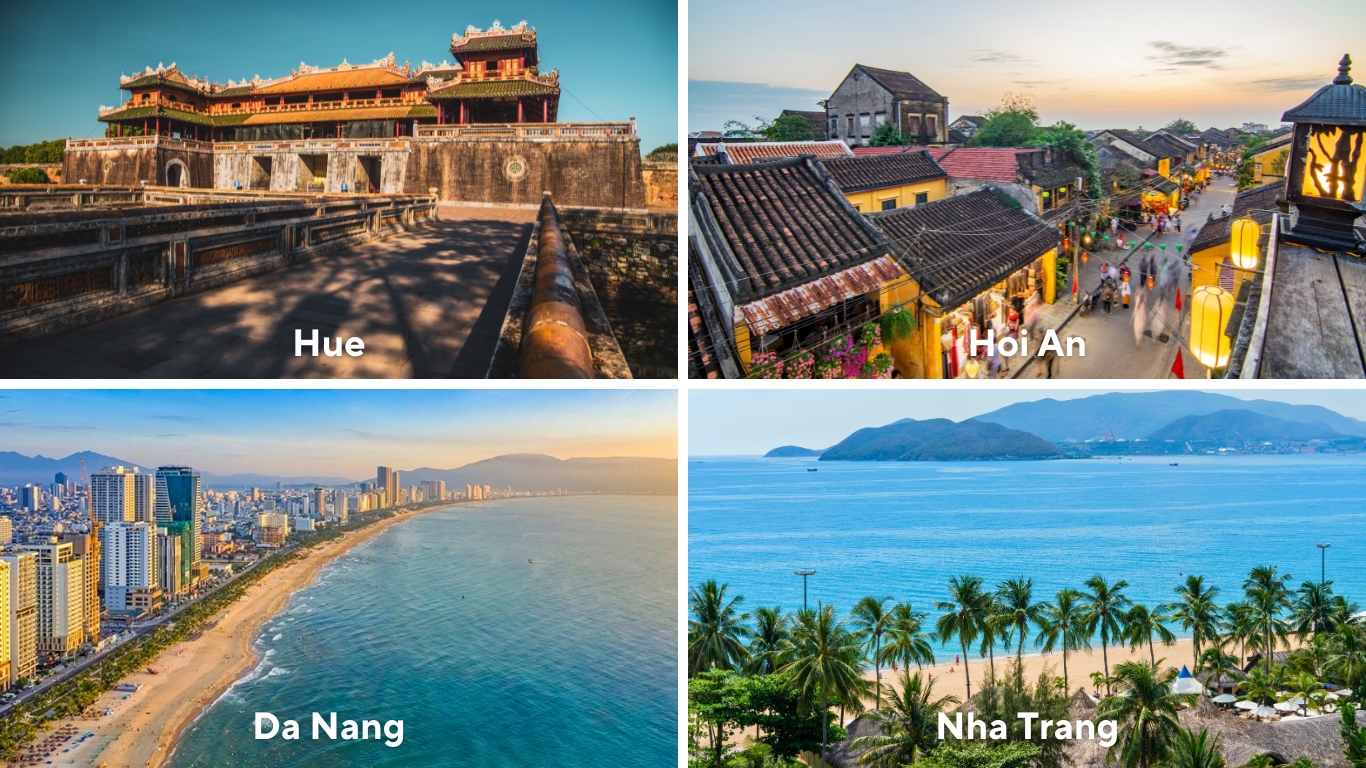
Central Vietnam bridges the country’s extremes, offering both historical treasures and natural wonders. The region’s cuisine is notably spicier than its northern and southern counterparts, with distinctive dishes that reflect its royal heritage.
Must-visit central destinations:
- Hue: Imperial Citadel, royal tombs, Perfume River
- Hoi An: Ancient town, lantern-lit streets, tailoring shops
- Da Nang: Dragon Bridge, Marble Mountains, My Khe Beach
- Nha Trang: Beach resorts, islands, seafood restaurants
Southern Vietnam
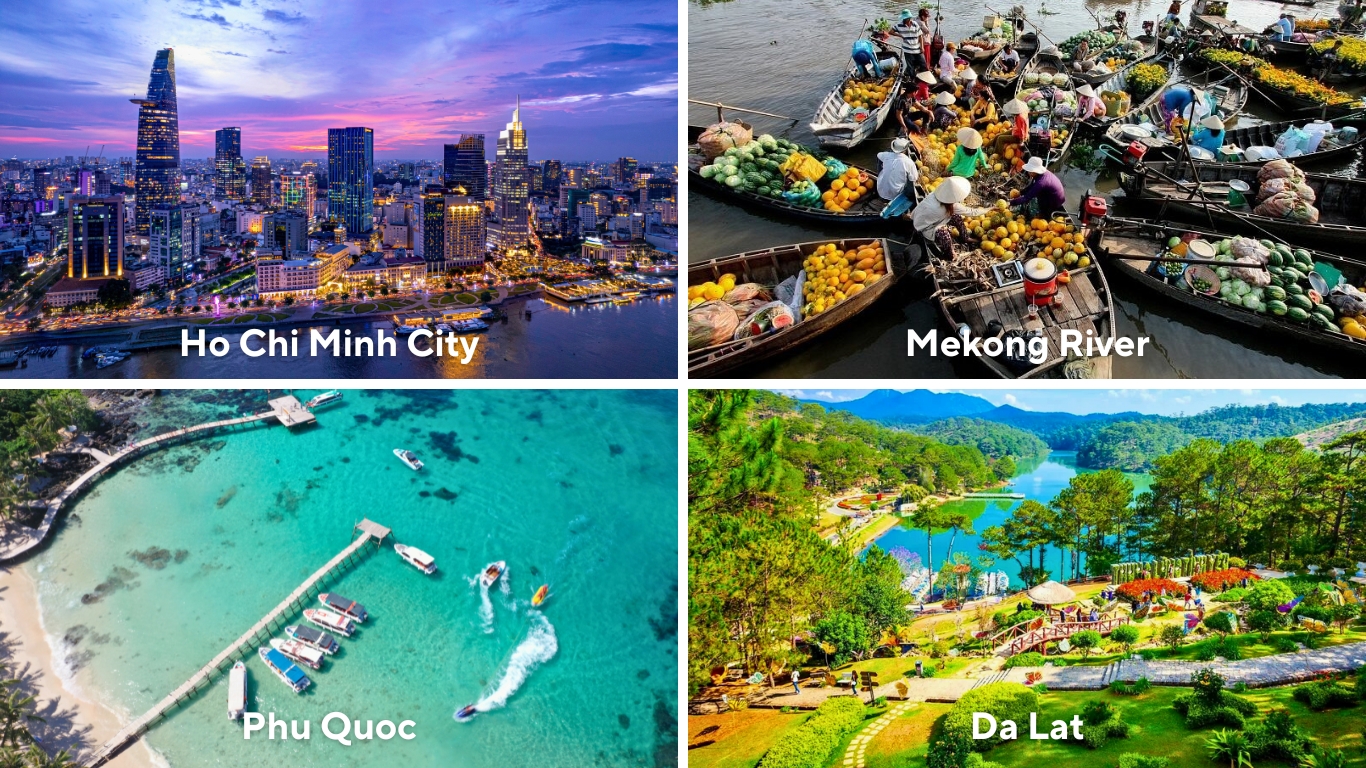
Southern Vietnam presents a more tropical atmosphere, with bustling modern cities and lush landscapes. Ho Chi Minh City (formerly Saigon) serves as the region’s dynamic hub, while the surrounding areas offer insights into Vietnam’s agricultural heart.
Southern highlights:
- Ho Chi Minh City: Colonial architecture, War Remnants Museum, Cu Chi Tunnels
- Mekong Delta: Floating markets, fruit orchards, river life
- Phu Quoc: White-sand beaches, pearl farms, fish sauce factories
- Da Lat: French colonial architecture, flower gardens, cool climate
Perfect Vietnam Itinerary 6 Days for Singaporean
A six-day journey through Vietnam allows you to experience the highlights in one region in Vietnam. This itinerary focuses on the most accessible and rewarding destinations for Singaporean travelers, considering flight times and connections.
Day 1: Arrival in Da Nang
Morning
Arrive in Da Nang and head to your hotel to drop off your luggage. Once settled, make your way to Han Market, a vibrant hub teeming with life. Here, you can shop for fresh produce, local snacks, and unique souvenirs while engaging with friendly vendors in a lively atmosphere.
Afternoon
After lunch at a local eatery, visit the iconic Dragon Bridge. Take a leisurely stroll along the Han River, enjoying the stunning views of the bridge and the bustling riverside. If you’re lucky, you might catch a glimpse of the preparations for the evening’s spectacular fire-breathing display.
Evening
As night falls, gather at the Dragon Bridge to witness the captivating fire show, which takes place every Saturday and Sunday at 9 PM. It’s a perfect way to kick off your adventure in Da Nang.
Day 2: Da Nang to Ba Na Hills
Morning
After breakfast, embark on a 20-minute cable car ride to Ba Na Hills. Enjoy breathtaking views as you ascend to this enchanting destination, known for its French Village charm.
Afternoon
Explore attractions like the Golden Thread Bridge, which offers stunning views, and the Debay Ancient Wine Cellar, where you can learn about the history of wine in the region. Don’t forget to stroll through Le Jardin D’Armour, where you can take in the beautiful gardens and architecture.
Evening
Return to Da Nang and relax at your hotel, or explore the city’s night markets for dinner, where you can sample local street food.
Day 3: Da Nang to Hue City
Morning
Enjoy breakfast before departing for Hue. Start your day with a serene boat ride on the Huong River, taking in the picturesque landscapes as you head to the Thien Mu Pagoda, a sacred site with a rich history.
Afternoon
Visit the Citadel Complex, where you’ll take a trishaw ride through the imperial city. Marvel at the Flag Tower, Noon Gate, and Thai Hoa Palace, immersing yourself in the grandeur of Vietnam’s royal past.
Evening
Conclude your day with a visit to the Khai Dinh Tomb, known for its unique architectural blend of Eastern and Western influences. Return to your hotel in Hue for a restful night.
Day 4: Hue to Da Nang and Hoi An
Morning
After breakfast, check out and head to Marble Mountain. Explore the sacred pagodas and caves, and take in panoramic views of the surrounding countryside.
Afternoon
Next, visit Son Tra Peninsula to see the impressive Linh Ung Pagoda and the towering Goddess of Mercy Statue facing the sea. Afterward, continue your journey to Hoi An.
Evening
Stroll through Hoi An Ancient Town, where you can visit the Japanese Covered Bridge, Trieu Chau Assembly House, and the Historical Museum. Enjoy dinner at a riverside restaurant, savoring local delicacies.
Day 5: Hoi An Adventures
Morning
Start your day with a fun Coconut Boat Tour in the Bay Mau Coconut Forest. Navigate through the tranquil waters and enjoy the beauty of this ecological gem.
Afternoon
Visit My Son Sanctuary, a UNESCO World Heritage site, to explore the ancient temples dating back to the 4th century. Immerse yourself in the history and culture of the Cham civilization.
Evening
Return to Hoi An and spend the evening at your leisure. Explore the charming streets, shop for souvenirs, or enjoy a cooking class to learn how to make Vietnamese dishes.
Day 6: Departure from Hoi An to Da Nang
Morning
Enjoy a leisurely breakfast at your hotel. Spend your last morning in Hoi An exploring at your own pace—consider visiting local shops or relaxing at a café.
Afternoon
Check out of your hotel and transfer to Da Nang Airport for your flight back to Singapore, taking with you unforgettable memories of your Vietnamese adventure.
The above is just a suggested itinerary. This itinerary can be customized based on your interests and travel style with Indochina Voyages.
>> Visit more of our Vietnam tour packages from Singapore to find your best trip!
How Much Does a Complete Vietnam Tour Cost?
Understanding Vietnam’s costs helps Singaporeans budget effectively. Here’s a comprehensive breakdown of SGD:
Accommodation (per night):
- Budget: 30-50 (clean hostels, basic hotels)
- Mid-range: 80-150 (3-4 star hotels)
- Luxury: 200+ (5-star hotels and resorts)
Daily Meals:
- Local street food: 3-5 per meal
- Mid-range restaurants: 10-20 per meal
- High-end dining: 30-100 per meal
Transportation:
- Taxi within the city: Starting from 5
- Grab bike: 2-5 per trip
- Domestic flights: 50-120
- Private car hire: 80-150 per day
Activities and Entrance Fees:
- Museums: 2-10
- Halong Bay cruise: 150-300 (overnight)
- Cooking classes: 40-80
- Day tours: 50-100
Total Budget Per Day (SGD):
- Backpacker: 70-100
- Mid-range: 150-250
- Luxury: 350+
A complete 6-day tour package typically ranges from SGD 800-2,500, depending on your preferred travel style. This usually includes accommodation, domestic flights, some meals, and guided tours. Adding special experiences or luxury accommodations can increase costs significantly.
Ultimate Travel Information to Vietnam for Singaporeans Only
When is the Best Time to Visit Vietnam?
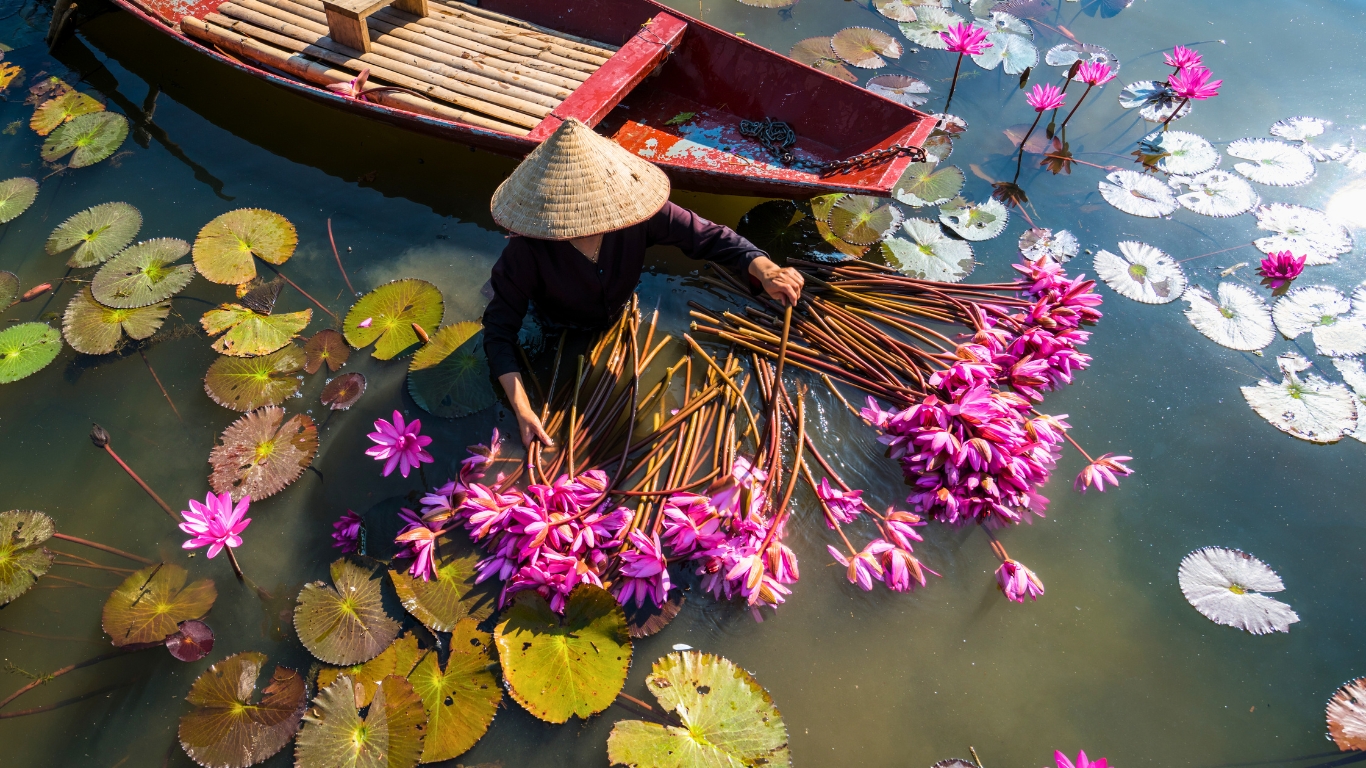
Vietnam’s climate varies significantly from north to south, making travel timing crucial. For Singaporeans, several factors influence the ideal visiting period.
Northern Vietnam (Hanoi, Halong Bay):
- Best months: October to December
- Most comfortable weather: 20-25°C
- Avoid: July-August (intense heat) and January-February (cold, drizzly)
Central Vietnam (Hoi An, Da Nang):
- Peak season: February to July
- Rainy season: October to January
- Best beach weather: May to August
Southern Vietnam (Ho Chi Minh City):
- Dry season: December to April
- Wet season: May to November
- Most pleasant: December to February
For Singaporean school holidays:
- June break: Good for central and northern Vietnam
- December break: Ideal nationwide, but expect higher prices
- March break: Perfect for southern regions
Flight deals from Singapore typically appear during:
- March-April (between peak seasons)
- September-October (shoulder season)
- Mid-week departures
Currency and Banking
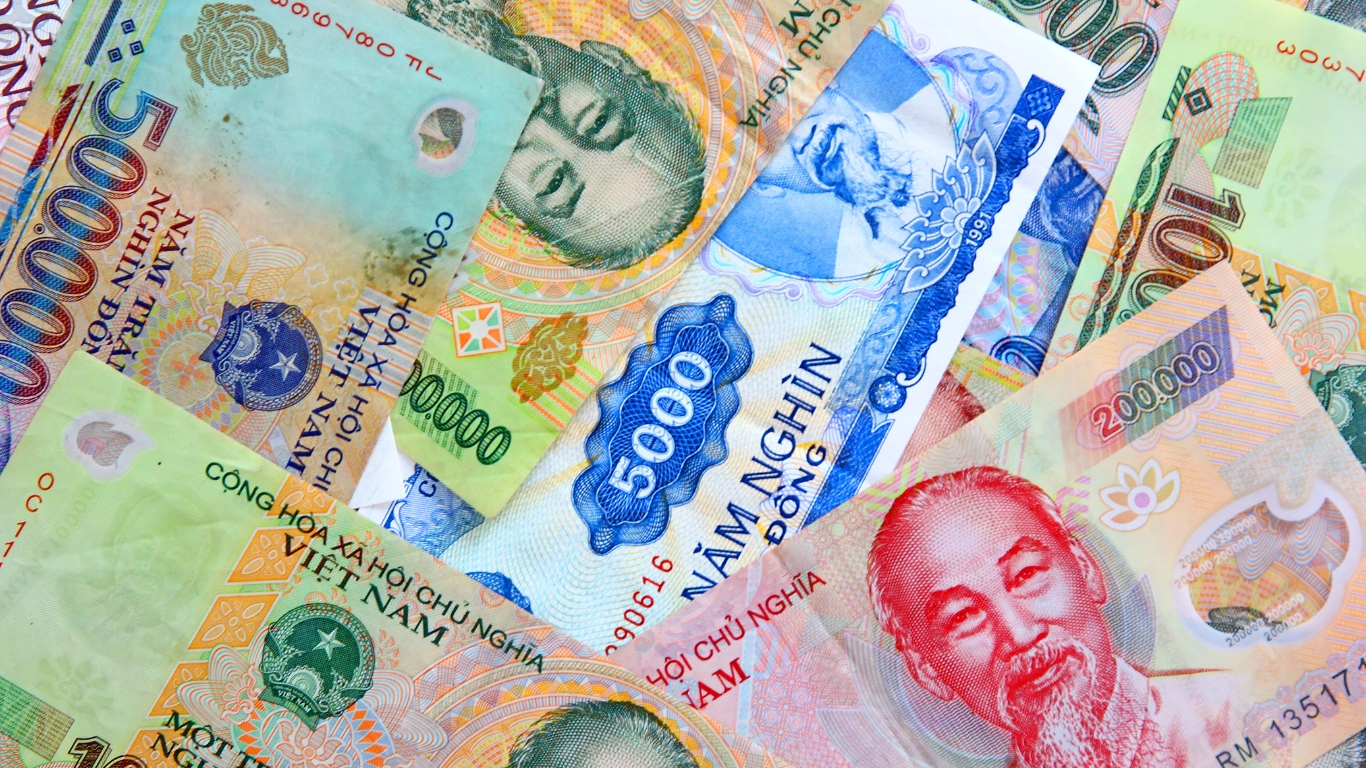
Vietnam uses the Vietnamese Dong (VND), with SGD 1 approximating 18,910 VND (Updated 2025). While major cities accept credit cards, cash remains king in most situations.
Money matters:
- ATMs widely available in cities
- Many places accept USD alongside VND
- Keep smaller denominations for taxis and street vendors
- Exchange money at banks or official money changers
- Notify your bank before travel
Electricity and Connectivity
Vietnam’s electrical system runs on 220V/50Hz, similar to Singapore. Most hotels use multiple socket types accepting both flat and round pins. Internet connectivity is generally good in cities, with:
- Free WiFi in most cafes and restaurants
- 4G coverage in urban areas
- Local SIM cards available at airports (recommended providers: Viettel, Vinaphone)
Local Laws and Customs
Understanding Vietnamese laws helps ensure a smooth trip:
Photography restrictions:
- No photos of military installations
- Ask permission before photographing people
- Some museums prohibit photography
Registration requirements:
- Hotels handle police registration
- Private stays need local police registration
- Keep passport copies separate from originals
Safety and Security
Vietnam is generally safe for tourists, but take normal precautions:
Transportation safety:
- Use reputable taxi companies (Mai Linh, Vinasun)
- Install the Grab or Be or Xanh SM app for reliable transport
- Always wear helmets on motorbikes
- Cross streets slowly and steadily
Health precautions:
- Drink bottled water only
- Eat at busy establishments
- Carry basic medicines
- Have travel insurance
Extra Travel Advice
Enhancing your Vietnam experience requires attention to cultural and practical details:
Cultural sensitivity:
- Remove shoes when entering homes or temples
- Dress modestly at religious sites
- Accept items with both hands
- Ask permission before taking photos of people
Food and dining:
- Try street food where locals eat
- Learn basic Vietnamese food terms
- Carry hand sanitizer
- Be adventurous but cautious with new dishes
Communication tips:
- Learn basic Vietnamese phrases
- Download offline maps
- Keep emergency numbers handy
- Use translation apps
Vietnam offers an incredible journey through history, culture, and natural beauty. While this guide provides comprehensive information, each trip becomes unique through personal discoveries and unexpected moments. Remember to stay flexible, embrace local customs, and most importantly, enjoy the wonderful hospitality of the Vietnamese people.
Keep updated with current travel advisories through official channels, and don’t hesitate to adjust your plans based on weather conditions or local events. Your Vietnamese adventure awaits with endless possibilities for creating unforgettable memories.
Thuy Dang – From Indochina Voyages Team

